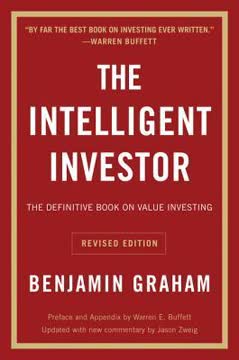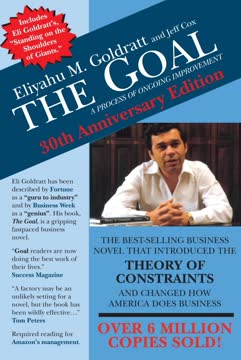Key Takeaways
1. Exploit the Trapped Value Gap: Turn Disruption into Opportunity
If you don’t get to it before others, you may find not just your future growth disrupted, but today’s businesses as well.
Trapped value defined. Trapped value represents untapped revenue sources and unmet customer needs that exist due to market inefficiencies or technological limitations. It's the potential revenue that companies fail to realize because they are unable to adapt to changing market conditions or leverage new technologies effectively. This gap between what's possible and what's actually being delivered creates opportunities for disruption.
The rise of digital disruptors. Companies like Amazon, Netflix, and Uber have successfully exploited trapped value by offering better, cheaper, and more convenient solutions than traditional incumbents. These disruptors leverage digital technologies to personalize experiences, streamline processes, and create new business models that cater to evolving customer expectations.
Incumbents can win. Incumbent businesses can also capitalize on trapped value by embracing a digital-first mindset and proactively seeking out opportunities to innovate. This requires a willingness to challenge existing assumptions, experiment with new technologies, and adapt to changing customer needs. The key is to overcome internal obstacles and embrace a culture of continuous reinvention.
2. Avoid the Seven Wrong Turns: Navigate Obstacles to Value Release
When the time came to pivot to digital technology, management decisions that seemed to fit every business school dogma instead pushed Tower into a corner with its equally stunned record producer partners, unable to move in any direction but down.
Common pitfalls. Many companies fail to release trapped value due to common management mistakes that hinder their ability to adapt to change. These "seven wrong turns" include:
- Making the company too lean
- Creating a capital structure built to fail
- Losing your head (sidelining visionary leaders)
- Managing to Wall Street (prioritizing short-term gains)
- Relying on luck
- Serving regulators, not customers
- Anticipating customers who aren't likely to show up
The Tower Records cautionary tale. The collapse of Tower Records serves as a stark reminder of the dangers of failing to adapt to technological change. Despite its initial success, Tower's rigid adherence to its existing business model and its inability to embrace digital distribution ultimately led to its demise.
Adaptability is key. To avoid these pitfalls, companies must cultivate a culture of adaptability, embrace experimentation, and prioritize customer needs over short-term financial gains. This requires a willingness to challenge conventional wisdom and embrace new approaches to strategy and execution.
3. Embrace the Seven Winning Strategies: Keys to Unlocking Value
We have identified seven common management mistakes that explain why so much trapped value continues to go unreleased by incumbent businesses.
Digital-first approach. To thrive in the face of disruption, companies must adopt a digital-first approach that integrates new technologies into both their product offerings and their internal operations. This requires a fundamental shift in mindset, from viewing technology as a cost-cutting tool to seeing it as an enabler of innovation and growth.
The seven winning strategies:
- Technology propelled: Mastering leading-edge technologies
- Hyper relevant: Sensing and addressing customer needs
- Data driven: Leveraging data for innovation
- Asset smart: Optimizing asset management
- Inclusive: Embracing stakeholder collaboration
- Talent rich: Cultivating a skilled workforce
- Network powered: Harnessing ecosystem partnerships
Haier's success story. Haier, the global appliance manufacturer, exemplifies the power of these strategies. By embracing a customer-centric culture, investing in new technologies, and empowering its employees, Haier has consistently outperformed its competitors and achieved sustainable growth.
4. The Wise Pivot: Balance the Old, the Now, and the New
The wise pivot crosses businesses and time frames, releasing value already there but currently trapped.
Continuous reinvention. In today's rapidly changing business landscape, a single transformation is no longer sufficient. Companies must embrace a culture of continuous reinvention, constantly adapting their strategies and operations to stay ahead of the curve.
The three lifecycle stages:
- The Old: Mature products and services approaching obsolescence
- The Now: Today's most profitable offerings
- The New: Emerging ventures targeted at the immediate future
Accenture's transformation. Accenture's own reinvention serves as a model for other companies seeking to navigate disruption. By balancing its strategic initiatives across the old, the now, and the new, Accenture has successfully transformed itself into a digital-first enterprise.
5. Restart Growth in the Old: Leverage Existing Assets with New Tech
Executives who master the wise pivot apply new technologies to old offerings, restarting growth that can fuel a pivot to the future.
Don't abandon mature businesses. Prematurely exiting or neglecting mature products and technologies can be a costly mistake. These businesses often hold untapped potential for growth and can generate valuable profits to fund future investments.
Apply new technologies. By applying new technologies to existing offerings, companies can revitalize mature businesses and unlock trapped value. This might involve streamlining processes, improving customer experiences, or creating new revenue streams.
Netflix's DVD business. Netflix's continued success with its DVD-by-mail service demonstrates the potential of mature businesses. By optimizing its operations and catering to a specific customer segment, Netflix has been able to generate significant revenue from its "old" business, even as it focuses on streaming.
6. Accelerate Profits in the Now: Strategic Investment for Rapid Growth
Masters of the wise pivot continue to invest strategically in their most successful products and services with the expectation of accelerating revenue growth and profits even more quickly.
Maximize potential. Companies should continue to invest strategically in their most successful products and services, with the goal of accelerating revenue growth and profits. This requires a deep understanding of customer needs and a willingness to experiment with new technologies and business models.
Data-driven insights. By leveraging data analytics, companies can gain valuable insights into customer behavior and identify opportunities to enhance their existing offerings. This might involve personalizing experiences, optimizing pricing, or developing new features.
CVS Pharmacy's transformation. CVS Pharmacy's shift from merely filling prescriptions to investing in technologies that improve health outcomes exemplifies this strategy. By focusing on customer pain points and leveraging data to personalize services, CVS is creating a more valuable and sustainable business.
7. Scale to Win in the New: Manage Risk and Capture Emerging Markets
To truly profit from disruption, an enterprise must be prepared to manage increasingly short windows of profitability, scaling up rapidly as customers embrace the new all at once, then scaling down nearly as fast when demand declines.
Embrace experimentation. The wise pivot requires a willingness to experiment with new technologies and business models, even if it means taking on significant risk. This might involve launching internal start-ups, investing in outside incubators, or acquiring promising disruptive businesses.
Rapid scaling. To capitalize on emerging opportunities, companies must be prepared to scale up rapidly as customer demand takes off. This requires a flexible and agile infrastructure, as well as strong partnerships and access to capital.
Royal Philips's elegant pivot. Royal Philips's transition from traditional lighting to LED technology and health technologies demonstrates the importance of careful planning, strategic investment, and a willingness to exit legacy businesses when the time is right.
8. The Innovation Pivot: Focus, Control, and Aspiration
Bold technology leadership driven by senior executives, the creation and acquisition of promising disruptive businesses, and a coordinated process that retrains employees and rebalances assets from one stage of the business lifecycle to the next.
Centralization vs. Decentralization: Finding the right balance between centralized and decentralized innovation is crucial. Centralization improves integration and alignment, while decentralization fosters creativity and experimentation.
Balancing control and autonomy: Striking the right balance between control and autonomy is essential for fostering a culture of innovation. Too much control can stifle creativity, while too little can lead to unfocused efforts.
Setting the aspiration level: Determining the appropriate level of aspiration for innovation efforts is critical. This involves assessing the potential impact of new technologies and setting realistic goals for revenue growth and market share.
9. The Financial Pivot: Optimize Capital for Sustainable Growth
The wise pivot is driven by a deep understanding of the obstacles that increasingly prevent older businesses from keeping up.
Fixed assets: Companies must carefully manage their fixed assets, recognizing that infrastructure can quickly become a liability in the face of disruption. This might involve selling off underperforming assets, investing in new technologies, or adopting asset-light business models.
Working capital: Optimizing working capital is essential for maximizing profitability and agility. This requires efficient inventory management, streamlined supply chains, and effective cash flow management.
Human capital: Investing in human capital is crucial for building a skilled and adaptable workforce. This might involve reskilling existing employees, hiring new talent, or fostering a culture of continuous learning.
10. The People Pivot: Leadership, Work, and Culture
The solution requires a reallocation of resources driven from the top: the CEO, CFO, and other members of the executive team.
Leadership styles: A successful wise pivot requires a mix of leadership styles, including operators who can efficiently manage existing businesses and entrepreneurs who can drive innovation and growth.
The future of work: Companies must embrace new models of work that leverage the power of both humans and machines. This requires a focus on reskilling employees and creating collaborative partnerships between humans and AI.
Corporate culture: A strong and adaptable corporate culture is essential for navigating disruption. This requires fostering a culture of innovation, embracing diversity and inclusion, and promoting transparency and trust.
Last updated:
Review Summary
Pivot to the Future receives mixed reviews, with an average rating of 3.77 out of 5. Readers appreciate its insights on industry disruption and technological adaptation, praising the book's frameworks and case studies. However, some criticize the lack of references and perceive it as promotional for Accenture. The book's emphasis on balancing old, current, and new business strategies resonates with many readers. While some find the writing style compelling, others note inconsistencies. Overall, it's considered a worthwhile read for those interested in business transformation and innovation.
Similar Books









Download PDF
Download EPUB
.epub digital book format is ideal for reading ebooks on phones, tablets, and e-readers.




